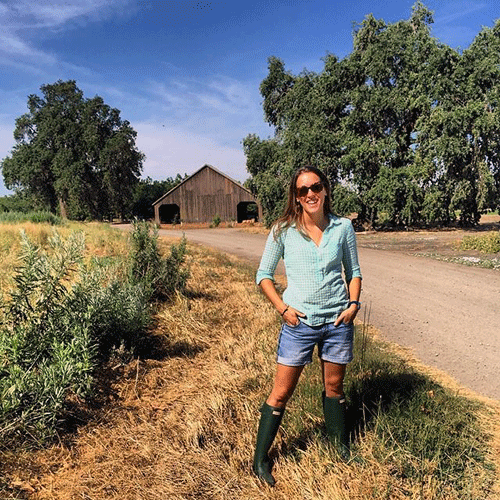
On a warm day in early September, Emily James, Sales/Logistic Manager at Robbins Rice Company, whisked Audubon staff to a fallow field where they were adding water to create mudflats for shorebirds. Anxious to see the birds the “new” wetlands were supporting, Emily had been there first thing that day and listed the birds she’d already counted: “We saw wood ducks, mallards, sandpipers, greater yellowlegs, kingfishers, avocets…..”
Emily loves all the bird-friendly practices Robbins Rice growers implement, but the slow drawdown of water after rice harvest is her favorite. “It’s truly impressive to see the huge number and of the different varieties of birds that come in. I also like to plant hedgerows because you see progress every year, and you get to shape the landscape over time.”
It is the birds that make the work fun. Emily’s favorite is the avocet. “I love to see their changing colors throughout the year. And they are the first birds that show up in the rice fields in spring.”
[audio mp3="http://www.audublog.org/blog/wp-content/uploads/2015/07/John-Davis-Home-...
John Brennan, a founding member of Robbins Rice Company, grew up the era of “clean” farming and vegetation-free field edges. He and his partners heard their parents’ stories of the pheasants and quails and hawks that their farm’s edges used to support when shrubs and tall grasses lined their waterways, of the huge flocks of waterfowl filling the sky, of the beauty of the landscape. Their parents’ stories convinced them to run their business with a commitment to bring that natural richness back. While rice country has always supported tremendous wildlife populations, the folks at Robbins Rice knew that they could do even more to offer birds food, cover, and safe nesting sites.
Robbins Rice enjoys seeing the impacts that their good stewardship both in the environment and in the marketplace. They continue to look for ways to share their work with their buyers and consumers so they can demonstrate now California rice growers leads the way in sustainable farming practices. Thanks to our partners at Robbins Rice Company for demonstrating all the ways rice farmers can (and do!) support birds.
For more information about Robbins Rice Company, check out their website: www.robbinsriceco.com
(Photos by Lisa Park)




